Table of Contents
Come join us now, and enjoy playing your beloved music and browse through great scores of every level and styles!
Can’t find the songbook you’re looking for? Please, email us at: sheetmusiclibrarypdf@gmail.com We’d like to help you!
Sorabji: In the Hothouse (from Two Piano Pieces) sheet music, Noten, partitura, spartiti 楽譜

Best Sheet Music download from our Library.

Please, subscribe to our Library.
If you are already a subscriber, please, check our NEW SCORES’ page every month for new sheet music. THANK YOU!
Browse in the Library:
Or browse in the categories menus & download the Library Catalog PDF:
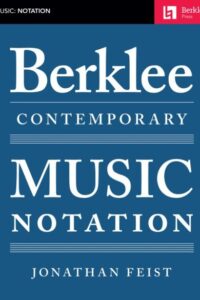
Who was Sorabji?
Kaikhosru Shapurji Sorabji: The Hermit of Modernist Maximalism
In the often-crowded pantheon of 20th-century composers, Kaikhosru Shapurji Sorabji (1892-1988) occupies a unique and enigmatic niche. A composer of staggering ambition, labyrinthine complexity, and self-imposed isolation, Sorabji crafted some of the most monumental, technically demanding, and stylistically idiosyncratic music ever conceived. His work, largely ignored during his lifetime and still challenging audiences today, represents a singular path through modernism – one defined by maximalism, intricate ornamentation, transcendental virtuosity, and a fierce, almost hermetic, independence.

Biography: A Self-Forged Identity
- Birth & Heritage: Born Leon Dudley Sorabji on August 14, 1892, in Chingford, Essex, England. His father was a Parsi engineer from India (thus the Persian-derived name Sorabji), and his mother was English-Spanish. This mixed heritage profoundly shaped his sense of identity, though he felt alienated from both cultures.
- The Name: Around 1914, he legally changed his name to Kaikhosru Shapurji Sorabji. “Kaikhosru” and “Shapurji” were Persian names chosen for their resonance and connection to ancient Persian history and Zoroastrianism, reflecting his deliberate construction of a unique persona.
- Musical Formation: Largely self-taught. He received some piano lessons in his youth but had no formal composition training. His musical education came through voracious listening, score study (especially Bach, Liszt, Busoni, Debussy, Ravel, Scriabin, Szymanowski, Medtner), and wide reading in literature, philosophy, and the occult.
- Early Career & Criticism: Worked as a music critic (under the pseudonym “S. Godfrey”) for outlets like The New Age and The New English Weekly from the 1910s to the 1930s. His critiques were famously acerbic, insightful, and often scathing, particularly targeting English musical provincialism and composers he deemed mediocre (which was most of them).
- The Recluse: Deeply disillusioned by the musical establishment and critical reception to his early performances (which were rare and often controversial), Sorabji gradually withdrew from public musical life starting in the late 1930s. After his mother’s death in 1940, he retreated almost completely to his secluded home “The Eye” in Corfe Castle, Dorset, where he lived with his companion, Reginald Norman Best, until his death. He forbade performances of his music for decades.
- The Ban Lifted: In 1976, pressured by a growing underground interest spearheaded by pianists like Yonty Solomon and Alistair Hinton (who later became his literary executor), Sorabji reluctantly lifted the ban on performances, provided he approved the performer.
- Death: Sorabji died on October 15, 1988, in Winfrith Newburgh, Dorset, leaving behind a colossal legacy of unpublished manuscripts.
Works: Monuments of Sound

Sorabji’s output is vast and overwhelmingly dominated by solo piano music, though he also composed orchestral works, chamber music, organ symphonies, and songs. His works are renowned for their extreme length, density, and technical difficulty, pushing the boundaries of playability.
- Key Masterpieces:
- Opus Clavicembalisticum (1930): His most famous (or infamous) work. A colossal 4+ hour piano epic in 12 movements (including fugues, passacaglias, toccatas, cadenzas), often considered one of the most challenging solo piano works ever written. A summit of contrapuntal complexity and virtuosic display.
- Symphonic Variations for Piano (1935-37): Another monumental work, exploring vast variation forms over an extended duration.
- Sequentia Cyclica super “Dies iræ” ex Missa pro Defunctis (1948-49): A massive cycle of 27 variations on the “Dies Irae” chant, demonstrating his intricate contrapuntal and transformative skills.
- 100 Transcendental Studies (1940-44): True to their name, these studies explore extreme technical and expressive demands far beyond those of Liszt or Chopin.
- Symphonies for Solo Piano: Several exist, including his Symphony No. 2 (“Jāmī”), blending orchestral textures and scope onto the piano.
- Gulistān – Nocturne for Piano (1940): A prime example of his lush, perfumed, and incredibly intricate “Persian”-inspired style.
- Concerti: He wrote several for solo piano and orchestra (e.g., Concerto per suonare da me solo e senza orchestra, per divertirsi), which are symphonic in scale and require superhuman virtuosity.
- Symphonies for Organ: Vast, complex works exploring the sonic possibilities of the instrument.
Analysis of Style: A Universe of Complexity
Sorabji’s style is instantly recognizable yet difficult to categorize. It synthesizes diverse elements into a unique and overwhelming whole:
- Maximalism: This is the defining characteristic. Sorabji embraced extremes:
- Length: Works lasting several hours are common.
- Density: Highly polyphonic textures, often with multiple independent melodic lines woven together in complex counterpoint (influenced by Bach, Busoni).
- Virtuosity: Demands transcendental technique – cascades of notes, complex polyrhythms, wide leaps, immense power, and extreme delicacy. He wrote as if the pianist had four hands.
- Ornamentation: Baroque-like ornamentation (trills, mordents, turns, grace notes) is ubiquitous, often layered and integral to the texture, creating shimmering, kaleidoscopic surfaces (influenced by Scriabin, Szymanowski, Middle Eastern/Persian music).
- Dynamic Range: From barely audible whispers to thunderous, percussive climaxes.
- Harmony: A complex fusion:
- Rooted in late-Romantic chromaticism (Scriabin, Szymanowski, early Schoenberg).
- Freely employed dissonance, clusters, and intricate chord structures.
- Often retained a sense of tonal centers or polarity, even amidst dense chromaticism (unlike strict atonality).
- Incorporated modal inflections, sometimes evoking Persian or Spanish flavors.
- Rhythm: Highly complex and fluid:
- Frequent use of polyrhythms (multiple simultaneous rhythms), cross-rhythms, and nested tuplets (triplets within quintuplets, etc.).
- Tempo often fluctuates wildly, requiring immense control.
- A sense of improvisatory freedom within highly structured forms.
- Form: Often large-scale, complex, and idiosyncratic:
- Favored variations (passacaglias, chaconnes), fugues, toccatas, and intricate multi-movement structures (like the Opus Clavicembalisticum).
- Forms were often expansive and cumulative, building through layered repetition and intensification rather than traditional development.
- Architecture was paramount, even in the densest textures.
- Influences (Assimilated, Not Imitated):
- Ferruccio Busoni: The most profound influence. Busoni’s ideas of “Young Classicism,” the transcendental potential of the piano, the fusion of Bachian counterpoint with modern harmony, and the concept of “Junge Klassizität” resonated deeply. Sorabji dedicated his Opus Clavicembalisticum to Busoni’s memory.
- Franz Liszt: Virtuosity, thematic transformation, large-scale forms, and the symphonic poem concept translated to piano.
- J.S. Bach: Contrapuntal mastery, structural rigor, and the use of forms like fugue and passacaglia.
- Alexander Scriabin: Mysticism, harmonic language, dense textures, and ecstatic climaxes.
- Karol Szymanowski: Sensuous harmony, intricate ornamentation (especially in the “Persian” inspired works like Métopes and Masques), and voluptuous textures.
- Debussy & Ravel: Color, texture, exoticism, and pianistic refinement.
- Mediterranean & Persian Cultures: While not authentically recreating these styles, he evoked their essence through ornamentation, melodic turns, and titles (Gulistān, Jāmī), reflecting his fascination with his Persian heritage and the wider Orient.
- Aesthetic: Sorabji’s music aimed for:
- Transcendence: Pushing beyond perceived limits of instrument, performer, and listener.
- Luxuriance & Opulence: A rich, sensual, almost decadent sound world.
- Intellectual Rigor: Underlying the sensual surface was meticulous structural planning.
- Individualism: A complete rejection of prevailing trends (serialism, neoclassicism, minimalism) in favor of his own uncompromising vision.
Legacy: From Obscurity to Cult Status
Sorabji’s legacy is complex and evolving:
- Decades of Neglect: His self-imposed exile and performance ban meant his music was virtually unknown outside a tiny circle for nearly 40 years. Manuscripts were inaccessible, unplayable, and unpublished.
- The Pioneers (1970s-): The lifting of the ban sparked interest. Pianists like Yonty Solomon, Michael Habermann, Geoffrey Douglas Madge (who made the first complete recording of Opus Clavicembalisticum in 1977), and later Marc-André Hamelin, Jonathan Powell, Fredrik Ullén, and Ronald Stevenson began the monumental task of learning, performing, and recording his works. This required immense dedication and technical prowess.
- Publication & Scholarship: The Sorabji Archive, established by Alistair Hinton (Sorabji’s literary executor), has been crucial in cataloging, editing, and facilitating the publication of scores (primarily by Dover Publications and The Sorabji Music Archive). Scholarly work is gradually increasing.
- Recordings Renaissance: The CD era and digital distribution (YouTube, streaming) have been transformative. Dedicated labels (Altarus, BIS, Toccata Classics, Piano Classics) have released numerous recordings, making this once-inaccessible music available globally. Complete cycles of the 100 Studies and other major works are underway.
- The Cult & The Challenge: Sorabji remains a “composer’s composer” and a cult figure. His music is not mainstream concert fare due to its extreme demands and duration. However, it commands deep respect and fascination among pianists, composers, and listeners drawn to its unique sound world and uncompromising vision. He is seen as the ultimate iconoclast, forging a path utterly independent of 20th-century musical fashions.
- Influence: His direct influence on other composers is hard to pinpoint due to his obscurity, but he stands as a powerful symbol of uncompromising artistic integrity and the exploration of extreme complexity and virtuosity. Composers interested in maximalism, intricate counterpoint, or pushing pianistic limits inevitably encounter his shadow.
- Copyright Controversy: The complex copyright status of his works (involving the Sorabji Archive and publishers) has sometimes been a point of friction within the community of performers and scholars seeking access.
Sorabji: The Solitary Giant
Kaikhosru Shapurji Sorabji was a true original. He inhabited a musical universe entirely of his own making, synthesizing diverse influences into a style characterized by unparalleled complexity, sensuous opulence, and transcendental ambition. His deliberate withdrawal from the world ensured decades of obscurity, but the dedication of pioneering performers and the power of recording technology have brought his extraordinary soundscapes to light. While his music remains challenging and demanding, it offers unparalleled rewards: a journey into a world of labyrinthine beauty, overwhelming power, and intellectual fascination. Sorabji stands as a testament to the power of an utterly individual artistic vision, uncompromising in its scope and ambition, a solitary giant whose monumental creations continue to challenge and inspire. He redefined the possible for the piano and left a legacy that continues to unfold as more performers dare to scale his musical Himalayas.
“In the Hothouse” is one of Sorabji’s most evocative and frequently performed works, serving as a perfect entry point into his dense, sensuous sound world. Here’s a detailed look at this fascinating piece:
Context: Two Piano Pieces (1918)
- Composed: 1918 (early in Sorabji’s career, age 26).
- Publication: First published in 1920, making it one of the earliest Sorabji works available in print.
- The Pair: “In the Hothouse” is paired with “Toccata” – a contrasting, hyper-virtuosic, and structurally complex piece showing his Busoni/Liszt influences. “In the Hothouse” offers the sensual, atmospheric counterpoint.
- Significance: Represents Sorabji’s early mastery of texture, harmony, and evocative atmosphere. It predates his gargantuan works but already displays his unique voice.
“In the Hothouse”: A Sensory Immersion
- Title & Imagery: The title instantly conjures an environment: humid, lush, teeming with exotic, overripe plant life, heavy perfumes, and stifling, enclosed heat. Sorabji translates this sensory overload into sound.
- Form & Structure: Relatively free and rhapsodic. It unfolds as a continuous, organic stream of consciousness rather than adhering to strict classical forms. Think of it as an elaborate, decadent arabesque.
- Style & Character:
- Extreme Sensuality: This is the defining feature. The music drips with lush, complex harmonies and suffocatingly rich textures.
- Harmony: Deeply chromatic, rooted in late Scriabin and early Szymanowski. Expect dense, constantly shifting chords: augmented harmonies, whole-tone inflections, unresolved dissonances creating tension, and sudden moments of surprising consonance like shafts of light piercing foliage. It avoids traditional tonality but gravitates around implied centers.
- Texture: Thick, layered, and constantly in motion. Tremolos, trills, rapid filigree (ornamental passages), and cascading arpeggios create a shimmering, humid haze. Melodies are often embedded within this dense undergrowth rather than standing clearly apart. The writing often requires the pianist to sustain multiple layers simultaneously.
- Rhythm: Fluid and flexible, often obscured by the sheer density of notes and ornamentation. Rubato (expressive tempo fluctuations) is essential. While less overtly complex polyrhythmically than his later works, the rhythmic flow feels organic and improvisatory.
- Dynamics & Articulation: Wide dynamic range, often shifting suddenly between extremes (e.g., thunderous climaxes collapsing into fragile whispers). Articulation varies from sharp staccatos to legatissimo passages that blur together. Pedaling is crucial for sustaining the harmonic haze and creating resonance.
- Ornamentation: Quintessential early Sorabji. Trills, mordents, turns, and grace notes are not mere decoration; they are the texture, creating constant flickering movement and contributing to the claustrophobic, teeming atmosphere. This foreshadows the intricate ornamentation dominating his mature style.
- Emotional Landscape: Evokes opulence, decadence, languor, mystery, stifling heat, hidden dangers, and overwhelming sensory stimulation. There’s a sense of beauty bordering on the grotesque due to its sheer intensity.
Influences Audible in “In the Hothouse”
- Scriabin (Primary): The harmonic language (mystic chords, unresolved dissonance, ecstatic climaxes), the sensual atmosphere, and the use of trills/tremolos are deeply indebted to Scriabin’s late sonatas and poems (e.g., Vers la flamme). Sorabji pushes Scriabin’s decadence further.
- Szymanowski: The opulent textures, perfumed harmonies, and “orientalist” exoticism (though abstracted here) strongly recall Szymanowski’s “Métopes” or “Masques,” which Sorabji admired deeply.
- Debussy: The focus on atmosphere, texture, and harmonic color (whole-tone scales, parallel chords) shows Debussy’s influence, though rendered with far greater density and intensity.
- Ravel: The virtuosic filigree and lush harmonies (think “Gaspard de la Nuit,” especially “Ondine” or “Le gibet”) are a touchstone, again amplified.
- Liszt: The rhapsodic freedom and dramatic gestures hint at Liszt, though filtered through a post-Scriabinesque lens.
Performance Challenges
- Texture & Balance: Maintaining clarity amidst the dense, rapidly shifting textures is paramount. The pianist must carefully voice chords and layers to prevent muddiness while sustaining the essential harmonic haze.
- Ornamentation as Texture: Executing the constant ornamentation smoothly and evenly, integrating it into the melodic and harmonic flow rather than treating it as mere decoration.
- Dynamic Control: Navigating the extreme dynamic contrasts and sudden shifts without sounding jarring. Creating a true pianissimo shimmer within complexity is incredibly difficult.
- Rubato & Phrasing: Applying expressive tempo fluctuations naturally while maintaining the overall structural coherence and forward momentum of the rhapsodic form.
- Pedaling: Using the pedal to create resonance and blend without causing harmonic blurring or loss of rhythmic definition. Requires exceptional sensitivity.
- Stamina & Focus: While shorter than his later works (typically 12-15 minutes), the piece demands intense concentration and physical control to sustain the atmosphere and navigate the technical intricacies.
Legacy & Significance of “In the Hothouse”
- Accessibility: It remains one of Sorabji’s most “accessible” works due to its evocative title, relatively shorter duration, and concentrated expression. It’s a frequent choice for pianists introducing audiences to Sorabji.
- Blueprint: It serves as a crucial blueprint for Sorabji’s mature style, showcasing his core preoccupations: sensuality, harmonic density, intricate ornamentation as texture, and atmospheric evocation, all present in embryonic form.
- Performance History: Despite Sorabji’s later ban, “In the Hothouse” (along with the Toccata) was one of the few pieces occasionally performed during his lifetime (e.g., by Sorabji himself and pianist Reginald Paul) and became a key work for the pioneering generation post-1976 (Yonty Solomon, Michael Habermann, Marc-André Hamelin, Jonathan Powell, Fredrik Ullén).
- Gateway Piece: It functions as a vital “gateway drug” into Sorabji’s world. Its success in conveying its intense atmosphere often encourages listeners to explore his more monumental, complex works.
- Standalone Masterpiece: Regardless of its role as an introduction, it stands as a perfectly formed and powerful piece of early modernist piano writing, a miniature tone poem of extraordinary evocative power.
“In the Hothouse” is a sun-drenched, overripe, and intoxicating immersion into Sorabji’s unique aesthetic. It captures the essence of his sensual maximalism in a concentrated dose, showcasing his debt to Scriabin and Szymanowski while asserting his own distinct voice. Its evocative power, technical brilliance, and relative brevity ensure its enduring place as one of his most beloved and frequently performed works, offering a compelling glimpse into the hothouse of Sorabji’s extraordinary musical imagination.
| Artist or Composer / Score name | Cover | List of Contents |
|---|---|---|
| Raccolta Spartiti Anni 70 |
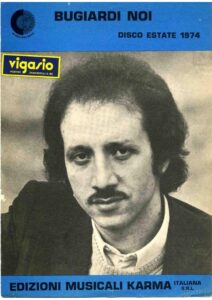 |
|
| Rachel Platten Fight Song Piano Vocal Guitar Sheet Music |
 |
|
| Rachel Portman – The Little Prince, Act I- Prologue (The Musical) Le Petit Prince | Rachel Portman – The Little Prince, Act I- Prologue (The Musical) Le Petit Prince | |
| Rachel Portman Ask The River For Piano Solo songbook |
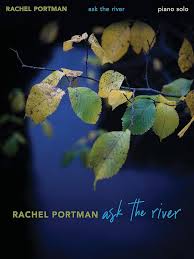 |
Rachel Portman Ask The River For Piano Solo songbook |
| Rachmaninoff Piano Concerto No 2 (Op 18) 2nd Mvmt Piano Solo arr. |
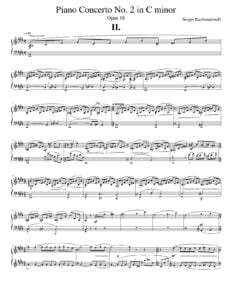 |
|
| Rachmaninoff Suite In D Minor, Lento Allegro 1891 (Piano Arrangement) | Rachmaninoff Suite In D Minor, Lento Allegro 1891 (Piano Arrangement) | |
| Rachmaninoff Symphony No. 2 arr. solo piano (easy) | Rachmaninoff Symphony No. 2 arr. solo piano (easy) | |
| Rachmaninoff Rhapsody on a Theme by Paganini Op 43 2 (complete arr. for 2 pianos) | Rachmaninov Rhapsody on… | |
| Rachmaninoff – Isle Of The Dead |
 |
|
| Rachmaninoff – Michael Scott (Book) 2011 Biography |
 |
|
| Rachmaninoff – Moment Musical Op 16 No. 3 (Musescore File).mscz | ||
| Rachmaninoff – Moment Musical Op. 16 No. 6 (Musescore File).mscz | ||
| Rachmaninoff – Piano Concerto No 2 (Op 18) – 2nd Mvmt – Piano Solo (Musescore File).mscz | ||
| Rachmaninoff – Piano Concerto No 2 (Op 18) – 3rd Mvmt – Piano Solo | Rachmaninoff – Piano Concerto No 2 (Op 18) – 3rd Mvmt – Piano Solo | |
| Rachmaninoff – Piano Concerto No 2 (Op 18) – 3rd Mvmt – Piano Solo (Musescore File).mscz | ||
| Rachmaninoff – Piano Concerto No 2 Op 18 – 1st Movement – Piano Solo (Musescore File).mscz | ||
| Rachmaninoff – Piano Concerto No 2 Op 18 – 1st Movement – Piano Solo arr | Rachmaninoff – Piano Concerto No 2 Op 18 – 1st Movement – Piano Solo arr | |
| Rachmaninoff – Piano Concerto No 3 (Theme 1st Mov.) easy piano |
 |
Rachmaninoff – Piano Concerto No 3 (Theme 1st Mov.) easy piano |
| Rachmaninoff – Piano Concerto No 3 (Theme 1st Mov.) Easy Piano (Musescore File).mscz | ||
| Rachmaninoff – Piano Concerto No 3 Theme From 1st Mov. Easy Piano Solo Arr. (Musescore File).mscz | ||
| Rachmaninoff – Piano Concerto No. 2 (1st movement) Solo Piano Arrangement | Rachmaninoff – Piano Concerto No. 2 (1st movement) Solo Piano Arrangement | |
| Rachmaninoff – Piano Concerto No. 2 (2nd movement) Solo Piano Arrangement | Rachmaninoff – Piano Concerto No. 2 (2nd movement) Solo Piano Arrangement | |
| Rachmaninoff – Piano Concerto No. 2 (3rd movement) Solo Piano Arrangement | Rachmaninoff – Piano Concerto No. 2 (3rd movement) Solo Piano Arrangement | |
| Rachmaninoff – Piano Concerto No. 2 (Solo Piano) |
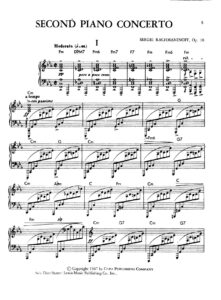 |
|
| Rachmaninoff – Piano Concerto No. 2 (Theme From 2nd Mov.) (Musescore File).mscz | ||
| Rachmaninoff – Piano Concerto no. 2 Op 18 (arr 2 pianos) | Rachmaninov piano concert II | |
| Rachmaninoff – Piano Concerto No. 3 The from first Movement (Solo Piano) |
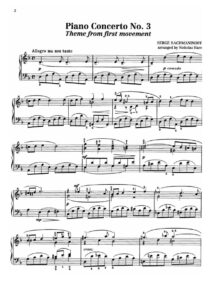 |
|
| Rachmaninoff – Prelude Op. 23 No. 4 In D Major (Musescore File).mscz | ||
| Rachmaninoff – Prelude Op. 3 No. 2 | ||
| Rachmaninoff – Prelude Op. 3 No. 2 (Musescore File).mscz | ||
| Rachmaninoff – Rhapsody On A Theme Of Paganini Variation Xviii (Musescore File).mscz | ||
| Rachmaninoff – Rhapsody On A Theme Of Paganini Variation 18 Solo Piano (Musescore File).mscz | ||
| Rachmaninoff – Rhapsody On A Theme Of Paganini Variation 18, Solo Piano | Rachmaninoff – Rhapsody On A Theme Of Paganini Variation 18, Solo Piano | |
| Rachmaninoff – Symphony No.2 Easy Piano Solo (Musescore File).mscz | ||
| Rachmaninoff – Theme from the Piano Concerto no. 2 arr. solo guitar |
 |
|
| Rachmaninoff – Vocalise (4 Hands Piano) (Musescore File).mscz | ||
| Rachmaninoff 18 variation on a Rhapsody theme by Paganini op. 43 (piano solo) arr. Loveridge |
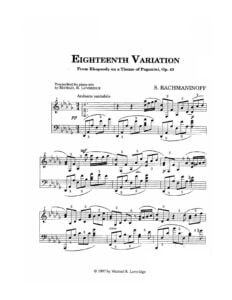 |
|
| Rachmaninoff 18 variation on a Rhapsody theme by Paganini op. 43 (piano solo) easy-intermediate version |
 |
|
| Rachmaninoff 6 moments musicaux op 16 piano | ||
| Rachmaninoff Album of 8 pieces | Rachmaninof-album of 8 pieces | |
| Rachmaninoff Op 33 n 8 | ||
| Rachmaninoff Op. 23 10 Preludes No.4 Andante cantabile in D Major | ||
| Rachmaninoff Op. 3 – Morceaux de fantaisie | ||
| Rachmaninoff Piano Concerto No 1 1st Movement Arr. For 2 Pianos |
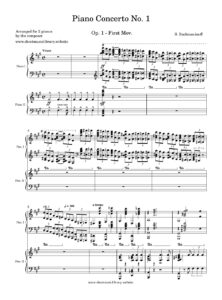 |
|
| Rachmaninoff Piano Concerto No 1 1st Movement Arr. For 2 Pianos.mscz | ||
| Rachmaninoff Piano Concerto No 2 Op18 Solo Piano arr. |
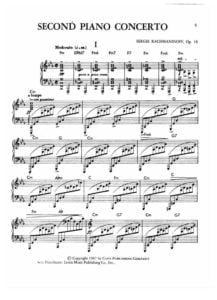 |
|
| Rachmaninoff Piano Concerto No 3 1st Movement (For 2 Pianos) (Musescore File).mscz | ||
| Rachmaninoff Piano Concerto No 3 Easy Piano Version |
 |
|
| Rachmaninoff Piano Concerto No. 3 3rd Mvmt (Arr. For 2 Pianos) (Musescore File).mscz | ||
| Rachmaninoff Piano Concerto no. 3 Op. 30 arr. for 2 pianos |
 |
|
| Rachmaninoff Piano Concerto No. 3 2nd Mov. arr. two pianos |
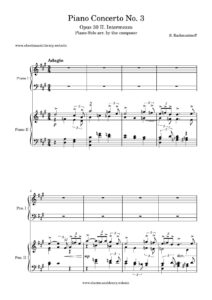 |
|
| Rachmaninoff Piano Concerto No. 3 2nd Mov. Arr. Two Pianos.mscz | ||
| Rachmaninoff Prelude Op 3 No 2 In C Sharp Minor (Musescore File).mscz | ||
| Rachmaninoff Rapshody On A Theme Of Paganini |
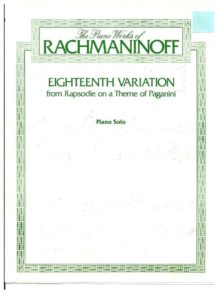 |
|
| Rachmaninoff Rhapsody on a Theme of Paganini, Op.43 -18 Variation (Loveridge arr. for piano solo) | Rachmaninoff Rhapsody on a… | |
| Rachmaninoff Selected Piano Works |
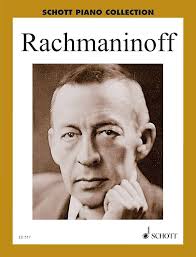 |
Rachmaninoff Selected Piano Works |
| Rachmaninoff Sergey Vasilievich – Romance |
 |
|
| Rachmaninoff Sergey Vasilievich – Suite in D Minor for Orchestra (piano version) | Rachmaninov Sergey Vasilievich – Suite in D Minor for Orchestra (piano version) | |
| Rachmaninoff Symphony no. 2 Op 27 arr. for 2 pianos |
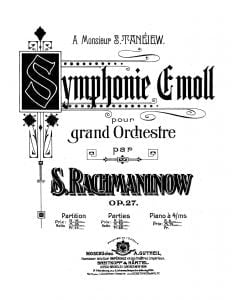 |
|
| Rachmaninoff The Illustrated Lives Of The Great Composers (Book) by Robert Walker |
 |
|
| Rachmaninoff Tonebase 10 Essential Tips |
 |
|
| Rachmaninoff Variation Xxiv On A Theme Of Paganini (Musescore File).mscz | ||
| Rachmaninoff Vocalise Easy Piano solo (Musescore file).mscz | Musescore File | |
| Rachmaninoff Vocalise easy piano solo version |
 |
|
| Rachmaninoff Vocalise Op 34 14 Piano 4 Hands Arr Niklas Schreiber | Rachmaninov-Vocalise-op-34-14- piano 4-hands | |
| Rachmaninoff Vocalise Op 34 14 Piano Transcribed By Takuya Shigeta | Rachmaninov-Vocalise_op-34-14-piano solo first page | |
| Rachmaninoff Vocalise piano solo arr. by Zoltan Kocsis |
 |
|
| Rachmaninoff Zdes Khorosho (How fair this place) op 21 n. 7 (Arcadi Volodos version) | Rachmaninoff Zdes Khoroshofinal (How Fair This Place) Op 21 N. 7 As Per Formed By Arcadi Bolodos 1st page | |
| Rachmaninoff, Sergei A Biography & Bibliography – by R.E. Cunningham jr. |
 |
|
| Rachmaninoff, Sergei – Suite in d Minor for Orchestra 1891 (Complete Piano Solo Arrangement) |
 |
Rachmaninoff, Sergei – Suite in d Minor for Orchestra 1891 (Complete Piano Solo Arrangement) |
| Rachmaninoff, Sergei-Kirker Symphony No.2,Op.27(Arranged For Piano solo) | Sergei Rachmaninov-Kirker Symphony No.2,Op.27(Arranged For Piano) | Rachmaninov-Kirker Symphony No.2,Op.27(Arranged For Piano) |
| Rachmaninoff’s Complete Songs A Companion With Texts And Translations |
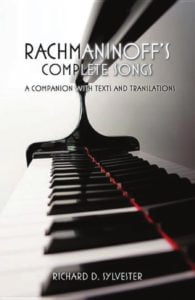 |
Rachmaninoff’s Complete Songs A Companion With Texts And Translations |
| Rachmanninoff Musical Momment No. 4 In E Minor (Musescore File).mscz | ||
| Radio Gals (The Broadway Musical) Dear Mr. Gershwin By Mike Craver |
 |
|
| Radiohead Hail To The Thief (Tab) Guitar with Tablature |
 |
Radiohead Hail To The Thief (Tab) |
| Radiohead Pablo Honey (Tab) |
 |
Radiohead Pablo Honey (Tab) |
| Radiohead The Bends (Tab) |
 |
Radiohead The Bends (Tab) |
| Radiohead – Fake Plastic Trees | ||
| Radiohead – Karma Police | ||
| Radiohead – Like Spinning Plates | ||
| Radiohead – No Surprises | ||
| Radiohead – Pyramid Song | ||
| Radiohead – The Piano Songbook |
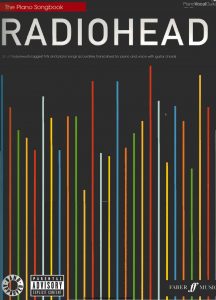 |
Radiohead |
| Radiohead Amnesiac Guitar with Tablature |
 |
Radiohead Amnesiac |
| Radiohead Creep – Piano Solo arr |
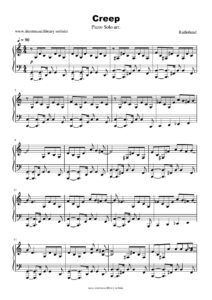 |
|
| Radiohead Guitar Anthology With Tablature |
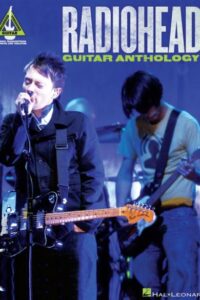 |
Radiohead Guitar Anthology With Tablature |
| Radiohead In Rainbows Guitar Songbook with Tablature |
 |
Radiohead In Rainbows Guitar Songbook |
| RADIOHEAD KID A Piano Vocal Guitar |
 |
RADIOHEAD KID A Piano Vocal Guitar |
| Radiohead No Surprises (Piano Solo) Musescore File.mscz | ||
| Radiohead No Surprises (piano with lyrics and guitar chords) |
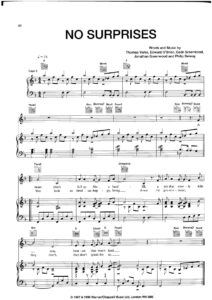 |
|
| Radiohead Ok Computer guitar Songbook with Tablature |
 |
Radiohead Ok Computer guitar Songbook |
| Radwimps Dream Lantern (Piano Solo) |
 |
|
| Radwimps – Dream Lantern (Piano Solo).mscz | ||
| Radwinps Yumetourou (Kimi No Na Wa) |
 |
|
| Ragazza d’argento (Michele Zarrillo) | ||
| Rage Against The Machine – Renegades (Rage Against The Machine) Guitar TABs |
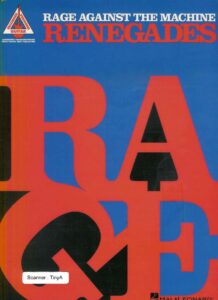 |
|
| Rage Against The Machine – The Battle Of Los Angeles (Rage Against The Machine) Guitar TABs |
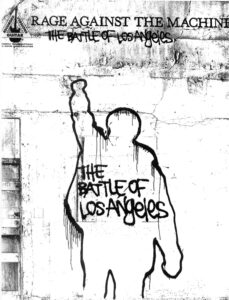 |
|
| Rage Against The Machine Anthology Guitar TABs |
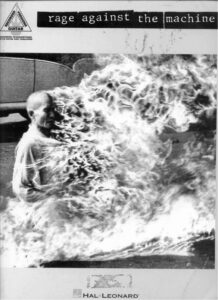 |
Rage Against The Machine Anthology Guitar TABs |
| Rags The Musical Music By Charles Strouse Lyrics By Stephen Schwartz |
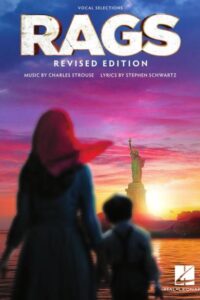 |
Rags The Musical Music By Charles Strouse Lyrics By Stephen Schwartz |
| Ragtime – Piano Vocal Score |
 |
Ragtime – Piano Vocal Score |
| Ragtime and Marches (Funtime Piano) |
 |
Ragtime and Marches (Funtime Piano) |
| Ragtime Gems (David Jasen) |
 |
Ragtime Gems (David Jasen) |
| Ragtime Jazz Piano Solos Series Volume 55 |
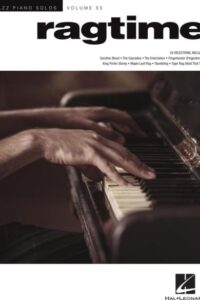 |
Ragtime Jazz Piano Solos Series Volume 55 |
| Ragtime Piano, Learn To Play – The Alfred Way, 9 Scott Joplin Songs |
 |
Ragtime Piano, Learn To Play – The Alfred Way, 9 Scott Joplin Songs |
| Raiders Of The Lost Ark – Raiders March | ||
| Rain Waltz – Fred Hersch (Piano Solo Transcription) Sheet Music (Musescore File).mscz | ||
| Raindrops Keep Fallin On My Head (Musescore File).mscz | ||
| Raindrops Keep Fallin On My Head.mscz | ||
| Ralph Vaughan Williams – Fantasia on a Theme by Thomas Tallis – (Keayboard arr. And also for strings quartet | Ralph Vaughan Williams – Fantasia on a Theme by Thomas Tallis – (Keayboard arr.) | Ralph Vaughan Williams – Fantasia on a Theme by Thomas Tallis – STRINGS QUARTET ARR. |
| Rambo (theme) Sheet Music |
 |
|
| Rameau – Les Choristes – Hymne a la nuit (SATB) | ||
| Rameau, Jean-Philippe Trois Pieces Pour Guitare Transcr By M Grizard |
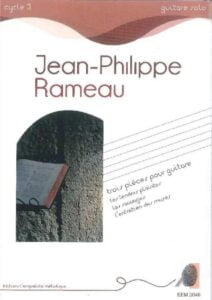 |
Rameautrois pieces guitarre |
| Ramin Djawadi – Dr Ford (Westworld) |
 |
|
| Ramin Djawadi – Westworld End Titles Theme Sheet Music |
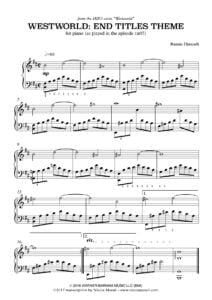 |
|
| Ramin Djawadi Blood Of My Blood Game of Thrones Piano Solo | Ramin Djawadi Blood Of My Blood Game of Thrones Piano Solo | |
| Ramin Djawadi Game Of Thrones Conductor Score Full Score For Strings Ensemble | Ramin Djawadi Game Of Thrones Conductor Score Full Score For Strings 1st page | |
| Ramiro Schiavoni 14 Preludios Minimalistas De Amores Dolidos Para Piano |
 |
|
| Rammstein – Engel | ||
| Rammstein – Ich Will | ||
| Ramon Ricker – Pentatonic Scales For Jazz Improvisation |
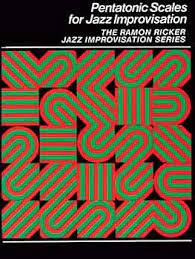 |
|
| Ramones – The Best Of (Guitar Anthology songbook with Tablature) |
 |
Ramones Guitar Anthology |
| Ramsey Lewis Slipping Into Darkness Piano Solo |
 |
|
| Ramsey Lewis The In Crowd (Piano Sheet Music) Musescore File.mscz | ||
| Ramsey Lewis Trio The In Crowd Piano Solo Transcription |
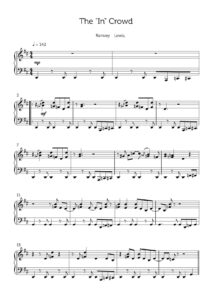 |
|
| Randy Edelman – The Last Of The Mohicans Theme (Piano Sheet Music) | Randy Edelman – The Last Of The Mohicans Theme (Piano Sheet Music) | |
| Randy Newman – You Ve Got A Friend In Me from from Toy Story | Randy Newman – You Ve Got A Friend In Me from from Toy Story | |
| Randy Newman Anthology |
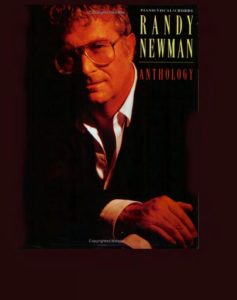 |
Randy Newman Anthology |
| Rascal Flats – Bless The Broken Road | ||
| Ratatouille – Soupedup – Michael Giacchino |
 |
|
| Ratatouille – Wallrat – Michael Giacchino | ||
| Raul Di Blasio Otoñal from Tiempos de Amor |
 |
|
| Rautavaara – Canctus Articus op. 61 (sheet music) | Rautavaara – Canctus Articus op. 61 (sheet music) | |
| Rautavaara – Flute Concerto op. 69 Full score |
 |
|
| Rautavaara – Narcissus (sheet music) | Rautavaara – Narcissus (sheet music) | |
| Rautavaara – Partita Op.34 Piano (Musescore File).mscz | ||
| Rautavaara – Partita op. 34 (sheet music) piano |
 |
|
| Rautavaara – Seven preludes for piano op. 7 (sheet music) | Rautavaara – Seven preludes for piano op. 7 (sheet music) | |
| Rautavaara – The Death of the Mother of God (Jumalanäidin kuolema (sheet music) | Rautavaara – The Death of the Mother of God (Jumalanäidin kuolema (sheet music) | |
| Ravel Menuet Sur Le Nom De Haydn (Piano) |
 |
|
| Ravel – Le Tombeau De Couperin (Musescore File).mscz | ||
| Ravel – Pavane Pour Une Infante Difunte – Piano | Ravel – Pavane Pour Une Infante Défunte – Piano | |
| Ravel Bolero Piano Solo Sheet Music transcription by Roger Branga |
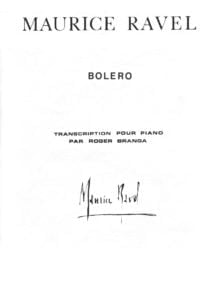 |
|
| Ravel Jeaux d’eau | Ravel Jeaux d’eau | |
| Ravel Menuet Antique |
 |
|
| Ravel Piano Masterpieces of Maurice Ravel PDF |
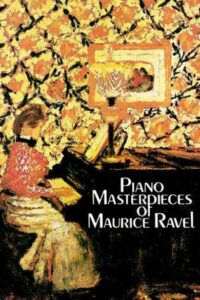 |
Ravel Piano Masterpieces of Maurice Ravel PDF |
| Ravel-Sorabji Rhapsodie Espagnole |
 |
|
| Ravel, Maurice La Valse Piano Solo ARR. |
 |
|
| Ravi Shankar L’aube enchantée (Flute & Guitar) |
 |
|
| Ray Brown Legendary Jazz Bassist |
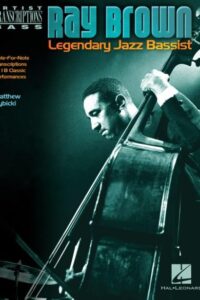 |
Ray Brown Legendary Jazz Bassist |
| Ray Bryant – Cubano Chant Piano Solo |
 |
